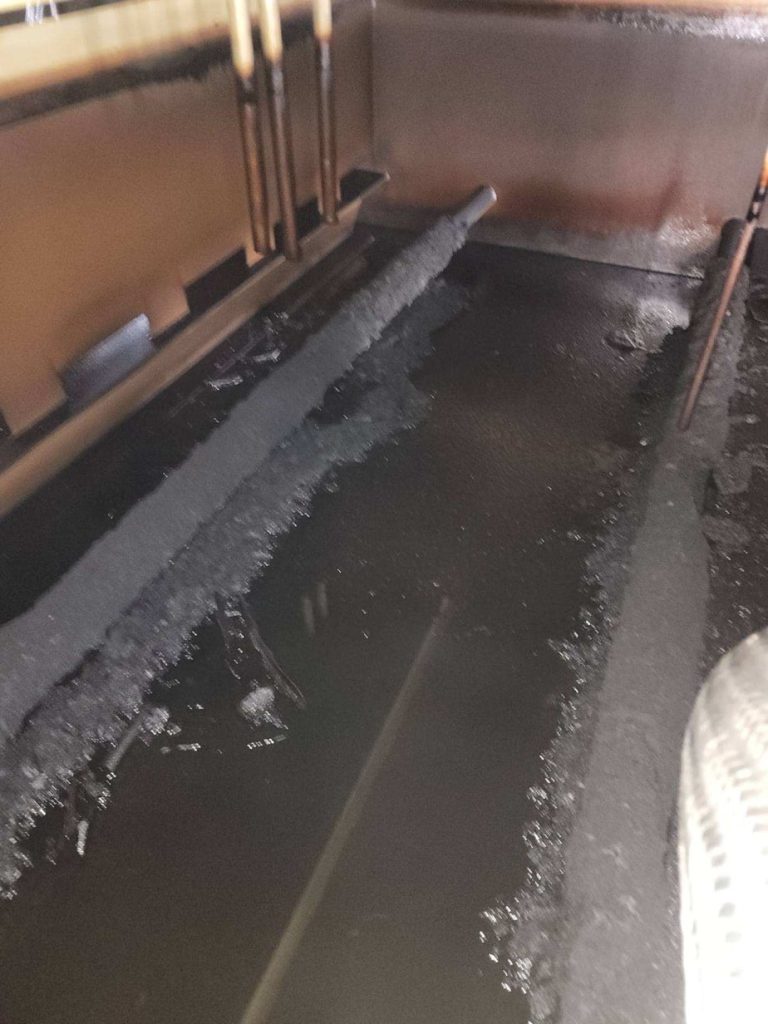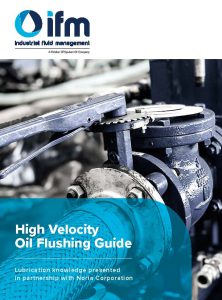Many people are hesitant when it comes to oil flushing practices. This discomfort, in some cases, seems to be driven by poor past experiences or alarming anecdotes passed on from others. Their experience usually begins with a seemingly healthy machine that is scheduled for an oil flush. Immediately after the preventative maintenance is performed, the machine fails. The conclusion is that the oil flush caused the machine’s failure. Sound familiar?
While there is a shred of reality to the idea that flushing can induce failure, it’s not always the case. In this article, we’ll discuss what the fishbowl effect is and how it relates to flushing, as well as some tips for performing your own flushing that can help you when leading a project or selecting a quality flushing service provider.
Stirring the Fishbowl (BS&W Monitor)
With a fishbowl, the slightest of agitations can cause the water to murk up with contaminants, such as sediment. Most of these solids will resettle, but never in exactly the same way as before. The water will also begin to look clearer, but there will still be fine particles suspended for a considerable time. Disturbing the sediment in oil lubrication systems can produce similar “fishbowl” effects.
Sumps and reservoirs serve as settling tanks to aid in the removal of sludge, dead additives, dirt, wear debris, water, and other heavier-than-oil contaminants. These low-lying impurities are collectively referred to as bottom sediment and water (BS&W). In the same sense that we wouldn’t want a loaded oil filter to burst and send a dense debris field downstream, we also wouldn’t want to agitate the BS&W in our sumps and reservoirs. Imagine this sequence of events relating to an oil flushing:
- The drain port of a reservoir is removed, and the aged oil flows into a waste oil container.
- Some of the BS&W is purged with the oil, but much of it stays clinging to the reservoir floor.
- During the drain, oil flowing toward the tank through piping, valves, pumps, and filter housings carrying suspended particles that were previously trapped in nooks and crannies. Some of these backwashed particles resettle in various locations, presenting the risk that they will be re-entrained into the oil on machine restart.
- When fresh new oil comes plunging into the reservoir, the BS&W is stirred up into a murky mass.
- On machine restart, the suspended reservoir muck and the displaced particles in the lines and machine components become mobilized by the flowing fluid and travel throughout the system.
- Some of these suspended particles induce accelerated wear in frictional load zones (bearings, gears, pumps, etc.), while others get trapped in narrow glands, oilways, and orifices, causing restricted oil flow (starvation conditions).
- The dense concentration of particles and impaired oil flow start a chain of events that ends in machine failure.
How to Prevent Machine Failure
In the ideal world, we wouldn’t allow BS&W to accumulate, and oil flushing wouldn’t be necessary. While the real world can’t eradicate BS&W, we can control its accumulation and resuspension, thereby reducing the likelihood of sudden failure. Here are some suggestions:
- Use a BS&W bowl (see Figure 1) to monitor and periodically time the purge of BS&W “on condition”. This will prevent hazardous accumulations and help track the source and rate of generation.
- After a needed oil drain, use a discharge wand from a filter cart to rinse out remaining BS&W from tank and sump bottoms before refilling with new fluid (see Figure 2). Confirm with an inspection that the rinse was successful.
- After new oil has been added, circulate the fluid through a filter at the highest flow rate possible before the machine is started and put under load. If necessary, use a filter cart. Allow the total oil volume to turn over no less than five times. Do a patch test or particle count to confirm cleanliness, especially for critical equipment.

Suggestions for Precision-Based Flushing
There’s no question about it — an oil flush is an intrusive intervention and should never be performed unless a pressing need exists. Its purpose is to dislodge the machine’s internal surfaces of varnish, sludge, and other harmful deposits. When done with skill and precision, flushes can offer numerous benefits with few side effects. When done poorly, planned and executed flushes can spell trouble for even the most reliable of machines.
Despite the risks, postponing a needed flush can make matters substantially worse. The risks of not performing a needed oil flush include line restrictions that result in oil starvation and the motion impediment of critical machine parts.
Therefore, before planning and performing a flush, it’s important to know the pitfalls and countermeasures. Suggestions related to flushing and the fishbowl effect include:
- Monitor and time the purge of BS&W “on condition”. You don’t have to flush what doesn’t accumulate.
- Partition sensitive machine components from flushing fluids by using blocking valves and bypass lines.
- Flush at higher flow rates than normal operating flows to improve turbulence.
- Flush in both directions to dig dirt out from hidden crevices.
- Flush at an elevated oil temperature to improve varnish scouring efficiency.
- Use an ample supply of chase fluid to displace the contaminant-laden flush fluids from all system zones.
- Special care should be taken to ensure that low zones and quiescent zones have no accumulations and that flushing fluids have been fully displaced.
- Use oil analysis to confirm that the oil is sufficiently clean and suitable for machine operation.
Remember the law of unintended consequences. At a minimum, do your homework and be proactive. And, when it comes to flushes of larger oil circulating systems, consider utilizing a professional flushing service. Remember, BS&W and the fishbowl effect is a serious lurking danger that requires proper planning and attention in order to avoid sudden failure.

